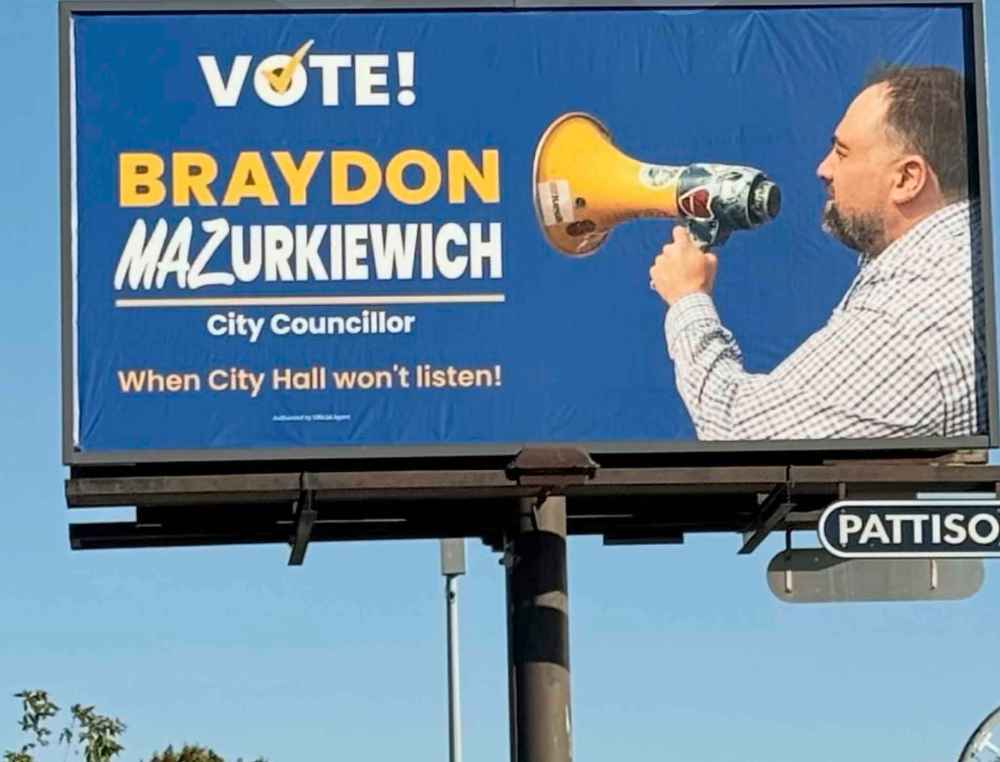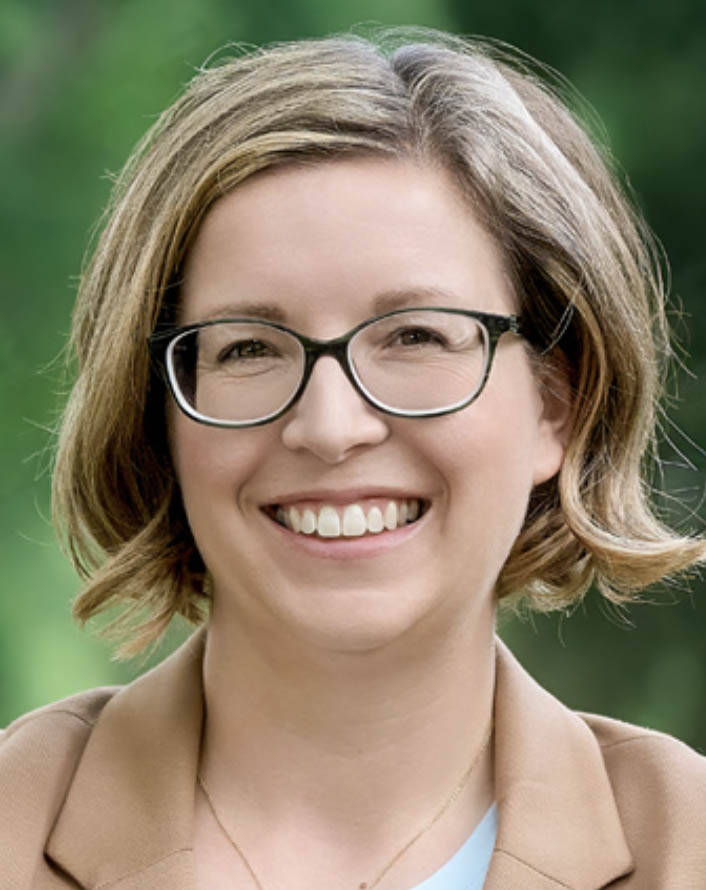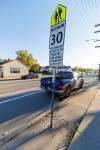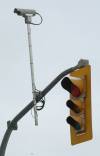Candidates for open council seat racing to photo (radar) finish
Top ticket-producing school-zone speed trap located in Saturday’s byelection ward; two hopefuls agree traffic cameras are about cash, not safety
Advertisement
Read this article for free:
or
Already have an account? Log in here »
To continue reading, please subscribe:
Monthly Digital Subscription
$0 for the first 4 weeks*
- Enjoy unlimited reading on winnipegfreepress.com
- Read the E-Edition, our digital replica newspaper
- Access News Break, our award-winning app
- Play interactive puzzles
*No charge for 4 weeks then price increases to the regular rate of $19.00 plus GST every four weeks. Offer available to new and qualified returning subscribers only. Cancel any time.
Monthly Digital Subscription
$4.75/week*
- Enjoy unlimited reading on winnipegfreepress.com
- Read the E-Edition, our digital replica newspaper
- Access News Break, our award-winning app
- Play interactive puzzles
*Billed as $19 plus GST every four weeks. Cancel any time.
To continue reading, please subscribe:
Add Free Press access to your Brandon Sun subscription for only an additional
$1 for the first 4 weeks*
*Your next subscription payment will increase by $1.00 and you will be charged $16.99 plus GST for four weeks. After four weeks, your payment will increase to $23.99 plus GST every four weeks.
Read unlimited articles for free today:
or
Already have an account? Log in here »
Elmwood-East Kildonan is home to the top ticket-generating speed trap in a 30 km/h school zone in all of Winnipeg — a source of ongoing frustration for drivers.
More than 65,000 camera flashes have caught speeders on Talbot Avenue and raised millions of dollars for the city over the last decade.
But is photo-radar technology making River Elm School students and others in the ward safer?
City council byelection candidates Emma Durand-Wood and Chris Sweryda, two of the seven people vying for the open seat, both have a lengthy response to the question.
“It’s a tool we should be using a lot more,” said Durand-Wood, co-founder of Safe Speeds Winnipeg, which lobbies for default residential speed limits to be 30 km/h.
“But I think continuing to use photo-radar without connecting the revenue from enforcement to physically making changes to areas where this is happening a lot is irresponsible.”
City police piloted then-new technology in October 2001 in an effort to deter drivers from speeding and running red lights.
Safe Speeds campaigns for lowered speed limits, traffic-calming measures and bike-lane installation.
MIKAELA MACKENZIE / FREE PRESS FILES Chris Sweryda announces his candidacy for Elmwood-East Kildonan city councillor in early October.
Sweryda’s campaign for council has been endorsed by WiseUp Winnipeg, a rival group that also bills itself as a grassroots initiative to improve road safety.
WiseUp’s Todd Dube and his network focus on fighting tickets in areas where there’s a disproportionate number, and government corruption at large.
Sweryda hasn’t been an active member for a decade, but he remains aligned with Dube’s position.
“It’s a driving tax and an attack against poor people,” he said, citing the fact that costly photo-radar violations do not identify bad individual drivers or result in demerit points.
Among his many titles, Sweryda is a law student, independent researcher and Winnipegger who has been obsessed with photo radar-related corruption over the last 12 years.
He was working on the speed trap file in city councillor Jason Schreyer’s office when his boss died on April 30.
Schreyer’s unexpected death triggered Saturday’s council byelection.
Throughout the 2025-26 school year, the Free Press is investigating reduced-speed zones and related issues affecting drivers and other road users.
Mayor Scott Gillingham says he’s “always open” to making data-informed decisions to protect community members using speed humps and other infrastructure designs.
“We have used those traffic-calming measures in various ways before,” Gillingham told an unrelated news conference last week.
Asked why the same schools are ticket hot spots, year over year, the mayor said he’d be willing to consider “improvements” if evidence suggests change is needed.
Eastbound Talbot Avenue between Watt Street and Gateway Road was the most-ticketed 30 km/h school zone in the city from Sept. 1, 2024 to June 30, generating 5,833 fines.
Last year’s enforcement data — obtained via a costly freedom-of-information request — is aligned with a decade of record-keeping at the University of Winnipeg.
Sociologist Curt Pankratz works with Sweryda, a guest lecturer, to analyze speed-camera violations. Their findings show police raise $4 million each month, on average, from photo enforcement.
As far as Sweryda is concerned, it’s a major conflict of interest, given the city is responsible for making roads safer.
The crowded race for the Elmwood-East Kildonan council seat reflects just how divisive “cash grab traps” — which is candidate Braydon Mazurkiewich’s preferred description of photo-radar — have become.
If he is elected Saturday, Mazurkiewich has pledged to scrap special designations surrounding River Elm School (500 Riverton Ave.) and École Voix Des Prairies (851 Panet Rd.).
SUPPLIED
The candidate, who is advertising himself as “a fighter” who is “for the people,” has taken inspiration from Ontario Premier Doug Ford’s provocative politics, which include the elimination of bike lanes to accommodate more vehicular traffic.
“Get out to vote to make sure that we don’t get bike lanes on Henderson Highway!” Mazurkiewich said in a rant he videotaped and uploaded online last month.
Also last month, Ford announced plans to ban “tax grab” speed cameras in his province. His government is anticipated to table legislation, despite pushback from municipalities, before the end of the year.
For Sweryda, the policy change is reason for Ontarians to celebrate, even though he has mixed feelings because “it’s for the wrong reasons.”
Ford, known for his populist rhetoric, is appealing to drivers who are frustrated because they are being deceived, he said.
It’s commonplace for Facebook users to flag mobile cameras set up outside Winnipeg schools in online neighbourhood groups.
It’s understandable why citizens are becoming radicalized online in relation to this issue, which can be a gateway to other conspiracies, both founded and unfounded, Sweryda said.
The independent researcher has spent the better part of the last decade using research to expose the effectiveness of enlarged signage and flashing lights, among other “passive traffic measures.”
But local decision-makers are “obsessed” with restrictive alternatives that generate revenue, he said.
Sweryda noted that many different entities, including the city and province, get a cut of speeding-violation revenues and none of them are willing to find alternative sources for that income.
Durand-Wood has had “an awful lot” of conversations on Elmwood doorsteps in recent months about speedy drivers and collisions.
The mother of three school-aged children has been painfully aware of dangerous drivers for as long as she’s been able to walk, bike and get behind the wheel.
One of her older brothers was killed at the age of three by someone operating a truck. Durand-Wood was a baby.
She said she found it heartening over the summer break to hear eligible voters share concerns about vulnerable neighbours: older pedestrians and children playing outside.
SUPPLIED Elmwood-East Kildonan candidate Emma Durand-Wood.
These conversations took place around the time Coun. Cindy Gilroy (Daniel McIntyre) proposed a now-defunct plan to investigate school zones with the largest number of ticketed speeders over the summer.
“Most people don’t want to speed in a school zone,” Durand-Wood said.
She has never been caught going above 30 km/h outside River Elm School, but there have been close calls.
“The roadway is so wide, you just naturally pick up speed,” she said, noting that drivers with even the best of intentions are misled by inadequate traffic-calming measures and city council’s inaction.
In the leadup to his 2024 retirement, former police chief Danny Smyth touted the cameras as tools that change driving behaviour.
Durand-Wood and Sweryda may be political opponents, but they both disagree with Smyth.
Durand-Wood, who supports speed cameras “in principle,” called the status-quo “a cash grab.”
She noted that ticket proceeds enter the city’s general-revenue pot rather than being directed specifically toward road safety.
A budgeting change is necessary, as well as introducing a blanket 30 km/h residential speed limit to create consistency, she said.
Sweryda said he considers lowering speeds a well-meaning, albeit misplaced, effort to improve safety, because fatal collisions are primarily the result of criminal behaviour.
City analysts are studying 30 km/h and 40 km/h speed limits in four neighbourhoods. Their findings, alongside recommendations, are anticipated to be released in early 2026, according to city spokesman Adam Campbell.
Asked about whether her objectives are all that different from her opponent’s, Durand-Wood took a brief pause.
“We actually might have some things in common here,” she replied.
maggie.macintosh@freepress.mb.ca

Maggie Macintosh
Education reporter
Maggie Macintosh reports on education for the Free Press. Originally from Hamilton, Ont., she first reported for the Free Press in 2017. Read more about Maggie.
Funding for the Free Press education reporter comes from the Government of Canada through the Local Journalism Initiative.
Every piece of reporting Maggie produces is reviewed by an editing team before it is posted online or published in print — part of the Free Press‘s tradition, since 1872, of producing reliable independent journalism. Read more about Free Press’s history and mandate, and learn how our newsroom operates.
Our newsroom depends on a growing audience of readers to power our journalism. If you are not a paid reader, please consider becoming a subscriber.
Our newsroom depends on its audience of readers to power our journalism. Thank you for your support.
History
Updated on Thursday, October 23, 2025 11:54 AM CDT: Adds photo.











